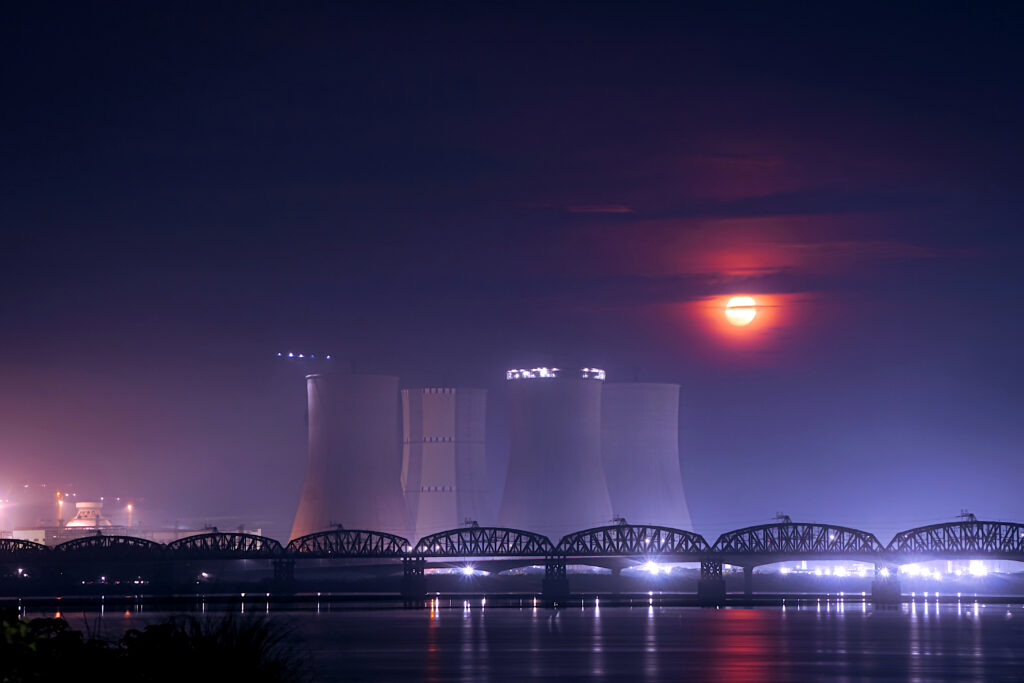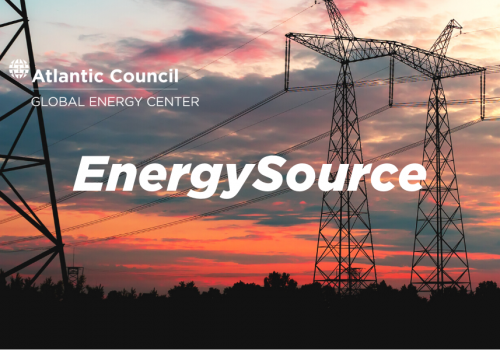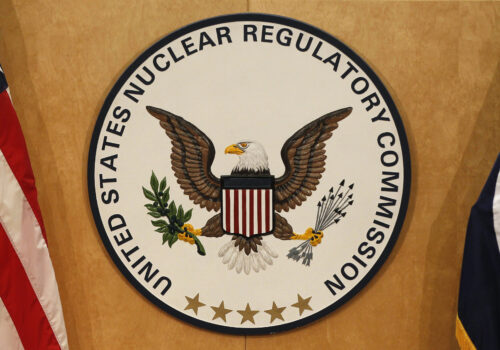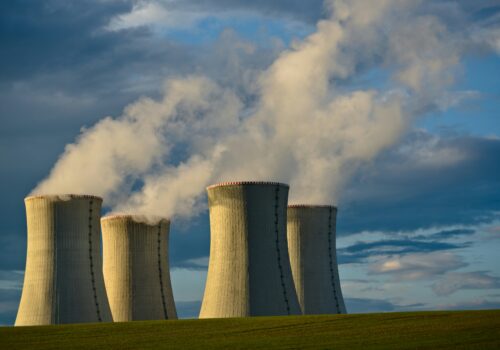The world is entering a new age for nuclear energy, as developing nations like India, Argentina, Egypt, and Pakistan consider adding nuclear power to their energy mix to rapidly increase domestic energy access. Multilateral development banks (MDBs) are in a position to enable this expansion of energy in their mission to help developing economies achieve economic growth and energy access, but the banks are hindering the use of nuclear power. Meanwhile, Russia and China, both nuclear technology export leaders, are filling the gap and gaining geopolitical influence. Other countries, such as France and the Republic of Korea, have state-owned nuclear enterprises, but they are market competitors and not geopolitical adversaries. As developing nations seek nuclear power to meet rising energy needs, MDBs must revise their outdated and politicized views of the technology—or risk ceding political capital to autocratic actors.
STAY CONNECTED
Sign up for PowerPlay, the Atlantic Council’s bimonthly newsletter keeping you up to date on all facets of the energy transition.
An essential tool in the development toolkit
Developing countries’ energy demand is rising, requiring more firm power generation. Nuclear energy offers a reliable baseload critical for economies industrializing with energy-intensive sectors such as manufacturing and data centers. A 900-MW nuclear reactor can produce—with a much smaller footprint—the same power as 8.5 million solar panels or 800 wind turbines. And, unlike hydropower and geothermal energy, nuclear power is much less geographically constrained, enabling it to be sited in many locations.
Major economies are exporting their nuclear aversion
Currently, most MDBs do not fund nuclear energy projects. The Asian Development Bank (ADB) refuses to finance nuclear energy projects due to issues such as waste management and high investment costs. The European Bank for Reconstruction and Development (EBRD) prioritizes its energy strategy for “scaling up renewables,” supporting nuclear projects solely in areas of safety like decommissioning, with no involvement in construction. EBRD states it is neither in favor of or opposed to nuclear energy; it is simply operating within the mandate determined by its shareholders. The World Bank—the largest and arguably most influential MDB—cites a lack of expertise as its reason for not funding nuclear energy projects, although it frequently relies on external contractors for expertise in other sectors.
However, the World Bank’s president, Ajay Banga, recently signaled a potential shift by pushing the board to reconsider its stance on funding nuclear energy projects. In reality, the World Bank’s voting structure, which allocates voting power according to how much funding a country provides, grants its biggest funders with veto power. Germany serves as a key example: it shut down its nuclear reactors and opposed the inclusion of nuclear power in the European Union’s green investment taxonomy. The World Bank is held hostage by this tunnel vision, which supports only renewable projects, even though these technologies alone cannot meet the growing energy demands of developing nations.
MDBs’ refusal to fund nuclear power projects exacerbates the geopolitical divide between developing economies and the developed nations. This results in missed opportunities to expand energy access in poorer nations based on the prejudices of wealthier nations.
Lenders of last resort
MDBs’ current failure to finance nuclear projects cedes opportunities to other lenders. Western banks, including Goldman Sachs and Barclays, recently announced their support for nuclear energy, but this long-term commitment is questionable given private lenders’ risk-averse nature. Prolonged construction timelines and high capital costs for nuclear energy projects in countries like the United States may eventually deter commercial banks from maintaining their support for the technology.
Russia and China could fill the gap if the West leaves nuclear financing to others. Russia leads global nuclear power plant construction, accounting for about 60 percent of reactor exports, with ongoing projects in nations like Turkey, Bangladesh, and Egypt. Similarly, China is rapidly building out its domestic nuclear capacity—targeting over 100 new reactors by 2035—and leveraging the technology as a geopolitical tool under its Belt and Road Initiative, establishing projects in nations such as Pakistan and Argentina.
The MDBs’ absence in nuclear financing starkly contrasts with the generous loans offered by Russia and China. By leveraging state funding, Russia offers highly attractive terms, covering up to 85 percent of total project costs, as seen in Egypt’s loan, with lower interest rates and longer repayment periods than those required by the Organisation of Economic Co-operation and Development (OECD) for its members—an organization that does not include Russia or China. Russia is also expanding its equity stakes in international nuclear projects, such as Turkey’s Akkuyu nuclear power plant, where it holds a majority stake, fostering closer geopolitical ties and exerting influence over critical energy infrastructure.
Similarly, China extends significant financial support, covering 85 percent of construction costs for Pakistan’s Chasma 5 reactor along with a $100 million discount on the total project cost. China has also offered to cover 85 percent of costs in loans for Argentina’s Atucha III reactor.
By refusing to finance nuclear projects, MDBs force developing nations to rely on Russian and Chinese nuclear exports. Both nations’ dominance in nuclear energy exports risks creating significant geopolitical imbalances, expanding their grip on critical energy sources while weakening Western influence over international energy security. The MDBs must rectify this problem to ensure a more geopolitically diverse financing model for nuclear power construction and operation in developing nations.
Breaking the logjam
MDBs must consider structural changes to bypass the veto power of its major players and begin funding nuclear energy projects. One option is to create a consortium of pro-nuclear states within the MDBs. These nations could create a separate fund for nuclear energy financing, independent of contributions from anti-nuclear nations. This would not be a complete fix—the bank’s broader policy against nuclear finance would remain unaffected—but it’s a crucial step in the right direction.
Outside of direct financial support, development banks do have other options. They can establish pathways for technical assistance for nuclear projects, similar to the Energy for Growth Hub’s nuclear trust fund proposal for the World Bank. This can include enlisting expert contractors as advisors to governments building nuclear power plants and fostering open dialogues on nuclear energy. By taking these steps, development banks can empower developing nations to harness nuclear power and create a more equitable energy future.
Don’t hand adversaries a nuclear victory
The increasing dominance of Moscow and Beijing in global nuclear energy finance risks reshaping future energy affairs. It is time for MDBs to acknowledge nuclear energy as an essential tool to expand energy access. The World Bank and other multilateral organizations must reform their antiquated policies to support nuclear energy deployment and allow developing countries to more readily achieve economic growth. If they don’t, autocratic regimes willing to weaponize their energy dominance will eagerly fill the void.
Juzel Lloyd is an energy/environmental technology researcher at the Lawrence Berkeley National Laboratory and a former Atlantic Council Global Energy Center Women Leaders in Energy and Climate fellow.
MEET THE AUTHOR
RELATED CONTENT
OUR WORK

The Global Energy Center develops and promotes pragmatic and nonpartisan policy solutions designed to advance global energy security, enhance economic opportunity, and accelerate pathways to net-zero emissions.
Image: Ruppur Nuclear Power Plant in Bangladesh. (Sanvi Ahmed Saim, Wikimedia Commons) https://commons.wikimedia.org/wiki/File:Ruppur_Nuclear_Power_Plant_,_Ruppur,_Pabna.jpg






